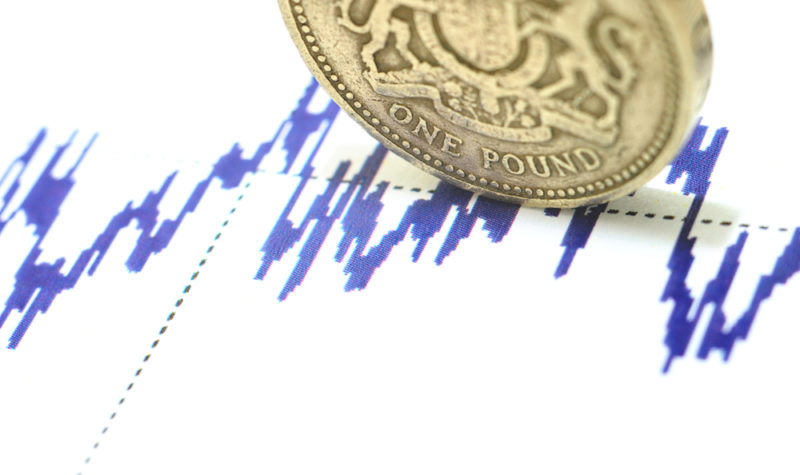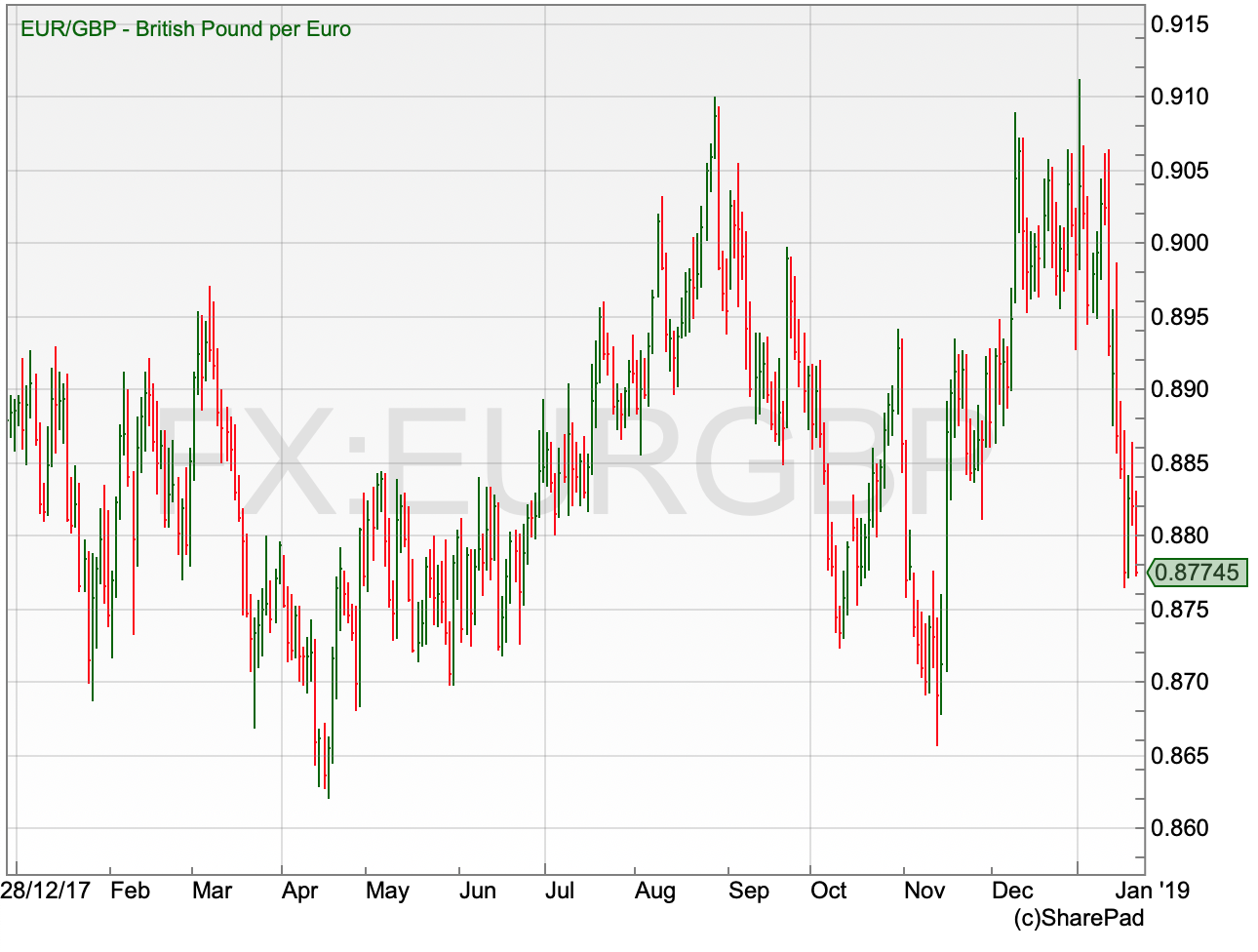Why the pound could be the surprise winner in 2019

As 2019 gets underway, the thoughts of investors and politicians have once again turned to what Brexit could mean for the UK economy. In the two and a half years since the referendum to leave the EU was held, it does feel as if an awful lot of time has been wasted. Parliamentary activity around Brexit in January 2019 has the feel of a school kid who has been procrastinating on getting that end of term project started – only to realise that the deadline is hurtling ever closer at break-neck pace.
It seems futile to spend anytime commenting on the political situation surrounding Brexit – given the disarray in Parliament, any cogent opinion could well be out of date before we get to the end of the paragraph. Instead, let’s focus on the important stuff – how is the pound doing?
Why isn’t the pound in free-fall?
The casual observer could be forgiven for thinking that these must be dire times for the UK economy – and more precisely, the country’s currency. Nobody liked the Brexit proposal; Prime Minister Theresa May suffered a record defeat; no party seems to have a solution that is going to win widespread acceptance amongst the population. So surely the pound must be getting clobbered? Not so.
GBP/USD 6 Month Chart

The pound/US dollar rate (GBP/USD) is admittedly hardly setting the world on fire – but it is not plunging either. Towards the end of January, it was trading at the same level – 1.2900 – where it had been at the end of August 2018. Indeed, after a wobble at the start of the year, January saw GBP/USD hit is best levels for a couple of months – and all of this despite the ongoing pantomime in the House of Commons.
On the face of it this really does not make much sense. The UK looks set to leave the European Union with no deal in place. What does this mean for the economy after 29th March? No one is really too sure, and depending on who you ask you will get a range of answers. So we appear to have uncertainty – and we all know that is one thing that financial markets are not a fan of.
The uncertainty is the one certainty
“The uncertainty is the one certainty” is admittedly something of a convoluted line, and perhaps more suited to a self-improvement book. But the one thing that financial markets doknow from all of the information that is out there at the moment, is that the absolute worst-case scenario is known and that is a “No-Deal” Brexit. I think this known fact is helping to put a floor underneath the financial market’s pessimism for the pound’s fortunes.
| This article will be featured in the next issue of Master Investor Magazine
Never miss an issue of Master Investor Magazine – sign-up now for free! |
The vote to leave the EU was always going to hit the pound. The night before the referendum, GBP/USD was trading at 1.5000, so it came into this year already 13% lower than back then. Don’t forget that markets are always forward looking and there is always the consideration that the bad news has been “discounted” into the price. I think this is what we could be seeing with the pound’s relatively strong start to this year.
At the moment, anything but a no-deal Brexit would arguably be viewed as a better option by financial markets. Extend Article 50? Great – more time to try and sort things out. A second referendum? Wonderful – another delay. And perhaps the financial markets’ nirvana of Brexit not happening – that would put a rocket under the pound!
We can’t rule out an unforeseen shock rocking markets ahead of the end of March deadline, but given what we currently know, and how markets are taking it in their stride, the line of least resistance for GBP/USD could well remain up.
But isn’t it different when it comes to the euro?
If we take the US dollar out of the equation, does the outlook look negative for the pound? The euro/pound (EUR/GBP) exchange rate is the logical next market to examine.
EUR/GBP 12-month chart

The past 12 months have been choppy but ultimately directionless for the pound versus its nearest financial neighbour. EUR/GBP has oscillated between 0.91 at the top end and 0.86 as a base. Clearly, one of the explanations for the lack of direction from either side is that Brexit does not just affect the UK economy. The continental European economy is also gripped by this uncertainty. And, of course, European countries have problems of their own – just in January we learnt that Germany, traditionally seen as the industrial powerhouse of Europe, saw its economy grow at its slowest rate since 2013. There is a real risk that some of these European countries will slip into recession this year, and the Brexit uncertainty is not doing them any favours.
More pound gains to come?
I think the short answer to this is that further rises look likely – perhaps particularly against the US dollar. The Americans have their own problems of course – the ongoing discussions regarding trade wars, the US government shut-down and a feeling that perhaps the last six months’ rally in the US dollar has gone far enough for now. Let’s not get too carried away and expect to see the GBP/USD rate up at 1.5000 anytime soon. But a run back to the September highs around 1.3300 does not seem too over ambitious.
Of course, it is not a market for the faint hearted. It is being driven more than ever by political machinations and even though at the moment it looks like we know the worst Brexit outcome, let’s not underestimate the politicians’ skill at delivering a really negative surprise in the next few weeks! But for now, at least, the momentum remains behind the pound and the next couple of months will be fascinating as we run up to the date the UK is expected to leave the EU.

Comments (0)